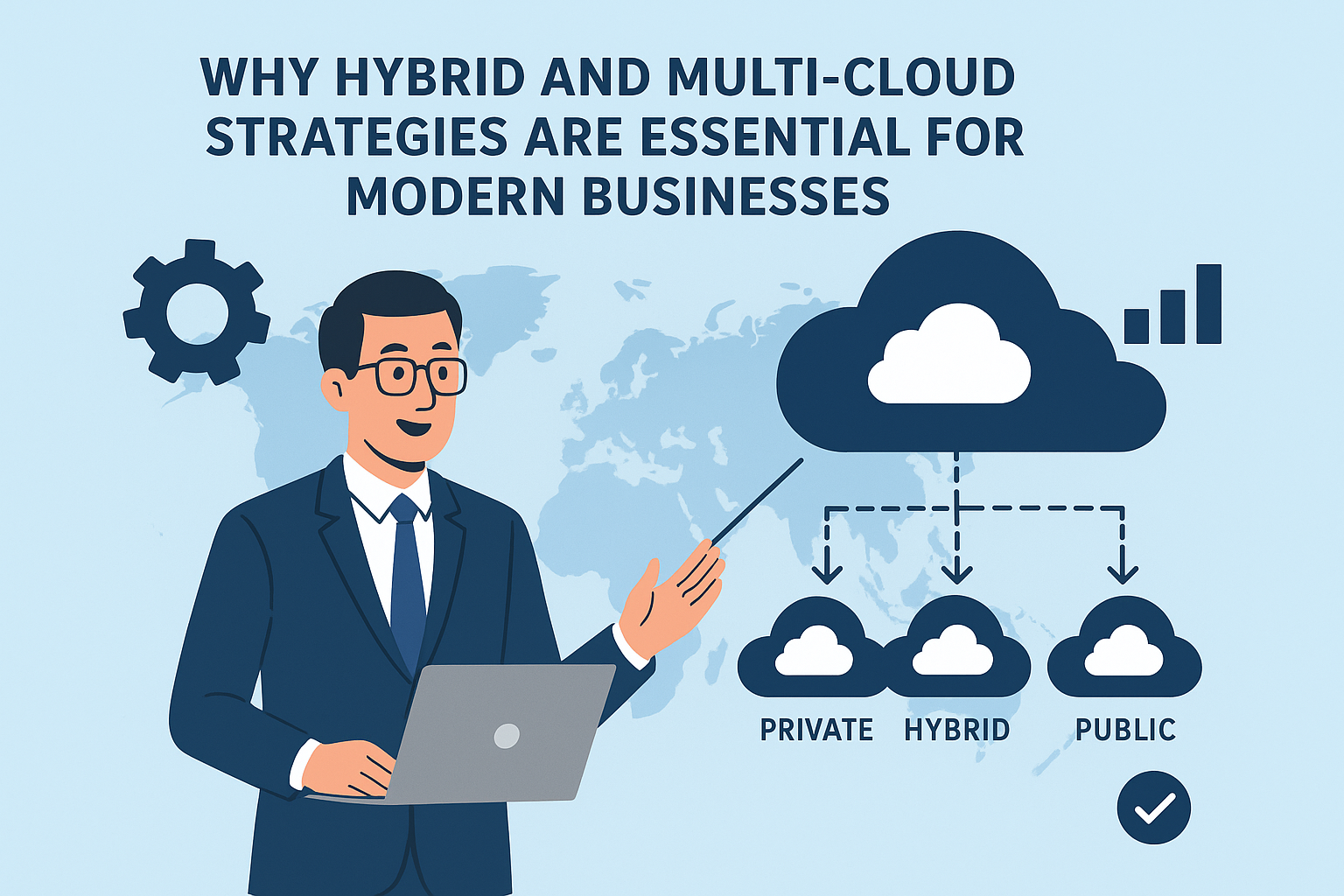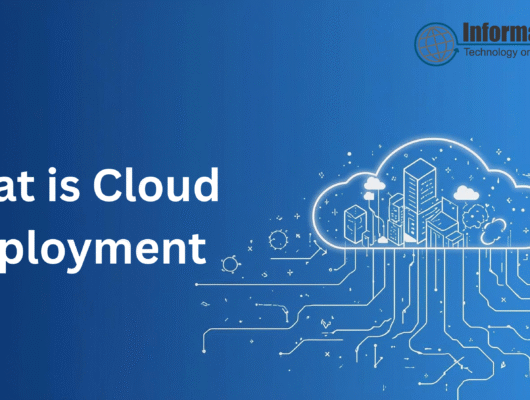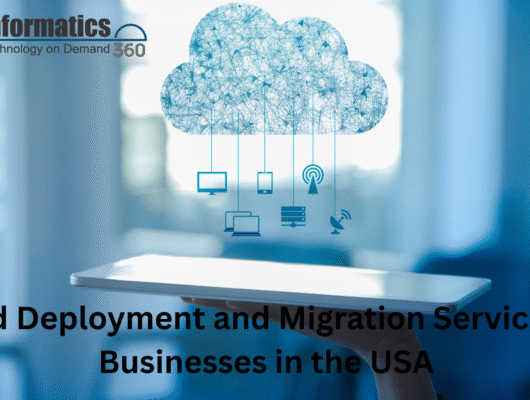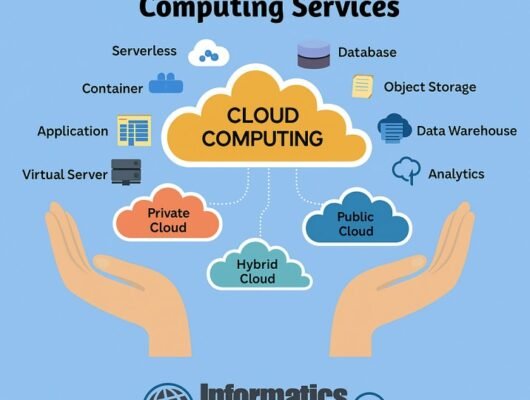Cloud computing has become the foundation of digital innovation across the United States. From healthcare providers in New York to retail brands in California, businesses are moving to the cloud to scale efficiently, enhance security, and reduce costs. However, selecting the right cloud deployment model is not a one-size-fits-all decision. The choice determines how you manage data, ensure compliance, maintain control, and optimize costs.
This guide explores the major cloud deployment models, compares their advantages and challenges, and provides real-world examples from leading US industries.
What Is a Cloud Deployment Model
A cloud deployment model defines where your cloud infrastructure resides, who owns and manages it, and how users access resources. It determines how your data is stored, the level of control you have, and the scalability of your environment.
In the US, businesses must also consider data residency laws, compliance frameworks such as HIPAA and CCPA, and cloud region availability to ensure their deployments meet performance and legal requirements.
Types of Cloud Deployment Models
There are four major cloud deployment models used across enterprises in the United States are Public Cloud, Private Cloud, Hybrid Cloud, and Community Cloud. Each model offers a unique balance of flexibility, control, and cost.
Public Cloud
The public cloud is a shared environment managed by third-party providers such as Amazon Web Services (AWS), Microsoft Azure, and Google Cloud Platform (GCP).
It is ideal for startups and enterprises looking for scalability, cost efficiency, and on-demand resources. Users pay only for what they consume, making it perfect for dynamic workloads or fast-growing businesses.
Example:
A fintech startup in San Francisco uses AWS to host its trading platform. The public cloud provides instant scalability during peak trading hours, while maintaining uptime and reliability.
Benefits:
- Rapid scalability
- Low upfront costs
- Global accessibility
- Managed infrastructure
Challenges:
- Limited control over infrastructure
- Potential vendor lock-in
- Shared security responsibility
Private Cloud
The private cloud is dedicated infrastructure used by a single organization. It can be hosted on-premises or managed by a third-party data center provider.
US enterprises in sectors such as finance, government, and healthcare often choose private cloud environments for compliance, security, and customization.
Example:
A healthcare network in Massachusetts runs a private cloud to store patient data in compliance with HIPAA regulations. The organization controls all infrastructure components and maintains strict access controls.
Benefits:
- High security and privacy
- Customizable environment
- Predictable long-term cost
- Full data control
Challenges:
- Higher capital expenditure
- Limited scalability compared to public cloud
- Requires in-house expertise
Hybrid Cloud
The hybrid cloud combines both public and private cloud environments, offering the best of both worlds.
It allows data and applications to move seamlessly between environments, enabling organizations to choose the most suitable infrastructure for each workload.
Example:
A nationwide retail chain based in Chicago hosts its e-commerce website on Azure public cloud while storing customer payment information in a private data center for enhanced security.
Benefits:
- Flexible workload placement
- Improved security and compliance
- Cost optimization through workload distribution
- Business continuity and disaster recovery options
Challenges:
- Complex management and integration
- Requires advanced networking and security coordination
Community Cloud
The community cloud serves multiple organizations that share similar security, compliance, or operational needs.
It is commonly adopted by government agencies, universities, or healthcare institutions within the same sector.
Example:
Several state government departments across the US share a community cloud designed for secure data exchange and joint regulatory compliance, reducing individual infrastructure costs.
Benefits:
- Shared cost and infrastructure
- Industry-specific compliance
- Enhanced collaboration
Challenges:
- Limited scalability compared to public cloud
- Complex governance and resource allocation
Cloud Deployment Model Comparison
| Feature | Public Cloud | Private Cloud | Hybrid Cloud | Community Cloud |
|---|---|---|---|---|
| Ownership | Third-party provider | Single organization | Combination | Shared by organizations |
| Cost Model | Pay-as-you-go | Capital investment | Mixed | Shared |
| Control Level | Low | High | Moderate to High | Moderate |
| Security | Standardized provider security | Full control | Variable by setup | Industry-specific |
| Scalability | Very high | Limited | High | Moderate |
| Compliance | General | Strong | Strong | Shared compliance model |
| Use Case Example | Startups, SaaS apps | Banking, Healthcare | Retail, Enterprise | Government, Education |
Key Considerations for US Businesses
When choosing a cloud deployment model in the US, companies must evaluate several strategic and regulatory factors.
1. Data Privacy and Compliance
Regulations such as HIPAA, FedRAMP, SOX, and CCPA demand strict control over data handling and storage. Businesses in healthcare or finance often rely on private or hybrid models to meet these standards.
2. Geographic Latency
For US companies serving customers nationwide, proximity to cloud regions affects latency. Deploying workloads in regions close to users — such as AWS US-East (Virginia) or Google Cloud US-West (Oregon) — ensures faster response times.
3. Cost and Scalability
Public cloud offers elastic scaling and minimal upfront costs but may lead to unpredictable monthly bills. Private cloud delivers predictable expenses, while hybrid setups let organizations balance cost and performance.
4. Security and Risk Management
Public cloud providers offer advanced security tools, but businesses are responsible for configuring access controls and encryption. Hybrid and private clouds allow tighter governance but require strong IT teams.
5. Integration and Legacy Systems
Many US enterprises still run legacy applications that are difficult to migrate. Hybrid cloud enables integration between modern cloud platforms and existing on-premise systems, ensuring smooth transition.
Emerging Trends in Cloud Deployment
The cloud landscape in the United States continues to evolve rapidly. The most prominent trends include:
1. Hybrid and Multi-Cloud Adoption
More than 90% of US enterprises use multiple clouds or hybrid configurations. Companies distribute workloads across AWS, Azure, and Google Cloud to avoid vendor lock-in and enhance resilience.
2. Edge Computing Expansion
As IoT devices grow across industries, edge computing complements cloud models. Manufacturing firms in Texas and logistics companies in Ohio use edge nodes to process data closer to users while connecting to cloud platforms for analytics.
3. AI and Automation Integration
Cloud environments are integrating AI-driven automation for scaling, security monitoring, and cost optimization. US tech companies increasingly deploy AI models through managed cloud services for faster innovation.
4. Cloud Cost Governance
US organizations are adopting FinOps strategies to manage cloud costs effectively. Cloud optimization ensures every resource aligns with business performance metrics.
Real-World Case Examples
Technology Startup (California):
A SaaS company launches on Google Cloud for speed and flexibility. It uses Kubernetes for container orchestration and scales infrastructure based on demand without capital investment.
Healthcare Provider (New York):
A hospital system moves its patient management software to a hybrid cloud — private for sensitive records and Azure public for telehealth apps. This ensures HIPAA compliance and performance scalability.
Retail Chain (Illinois):
A leading retailer deploys a hybrid model using AWS for web traffic management and private servers for transaction systems, enabling real-time analytics during Black Friday sales.
Government Collaboration (Washington DC):
Federal agencies adopt a community cloud for secure inter-agency data exchange, reducing redundancy and improving disaster recovery.
How to Choose the Right Cloud Deployment Model
Selecting the best model depends on multiple business factors. Use the following approach:
-
Assess Workload Sensitivity – Determine data criticality and compliance requirements.
-
Define Cost Objectives – Analyze capital versus operational cost preferences.
-
Evaluate Performance Needs – Consider user locations, latency, and scalability goals.
-
Plan Security Frameworks – Align deployment with your governance and identity management policies.
-
Start with Hybrid or Phased Migration – Many US enterprises begin with a hybrid approach before committing to full cloud adoption.
Conclusion
Cloud deployment models are the strategic foundation of modern digital operations. Whether your organization chooses public, private, hybrid, or community cloud, the key lies in aligning cloud architecture with business goals, compliance standards, and long-term scalability. For US companies aiming to modernize infrastructure, a well-planned hybrid or multi-cloud strategy offers flexibility, cost control, and resilience against evolving market demands.
With expertise in Cloud Consulting, Cloud Deployment, and Cloud Migration Services, Informatics360 helps US businesses design and implement secure, cost-effective cloud strategies that drive growth and innovation.
Partnering with an experienced cloud consulting company ensures expert guidance, seamless deployment, and measurable ROI.







